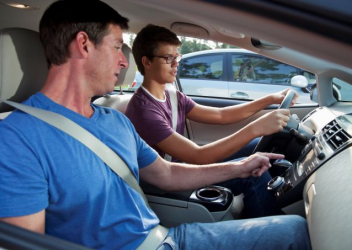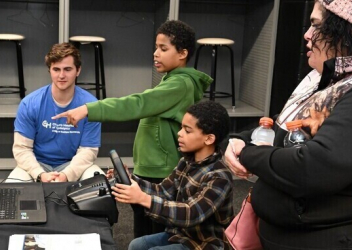Research In Action
Research In Action
Breadcrumb

My colleague, Dr. Patty Huang, a developmental and behavioral pediatrician at Children’s Hospital of Philadelphia, recently shared with me her discussion with a parent about navigating decisions related to learning to drive with her autistic teen. This inquiry reflected the difficulties many families face as they make decisions about major developmental milestones, including the decision to drive and the important role healthcare providers can play in this process.
Our recent research highlights this vital role healthcare providers play in supporting autistic teens and their families. The study describes their perspectives and experiences supporting families through this transition. Autistic adolescents often receive health care services from diverse teams of providers—including but not limited to physicians, advanced practice professionals, psychologists, and social workers.
For the present project, we conducted in-depth interviews about independence, licensure, and driving with 15 healthcare providers who cared for autistic adolescents and their families. Our study findings highlight how driving was often viewed by teens and their families through the lens of autonomy and the crucial role healthcare providers play in fostering discussion and collaborative decision-making.
Building Sense of Autonomy and Independence
We found many healthcare providers recognized independence and autonomy, such as that achieved through driving, can offer significant benefits for autistic teens and their families. One provider shared this observation regarding a caregiver who was:
“having a really hard time letting [their child] do anything that would move them towards autonomy and being an autonomous adult…Like a balance between keeping the child safe and protected and letting the child have that freedom and feeling a sense of self…control over what to choose to do.”
Providers also observed some teens were uncomfortable assuming this degree of independence, especially if they were accustomed to their caregivers doing things on their behalf throughout childhood and early adolescence.
However, as highlighted by another provider, this autonomy and independence can bring:
“so many benefits [of] being able to drive that far outweigh the risks. And that’s part of the conversation I have with parents. Look, I know that you’re scared, but if they can do this, this is gonna be amazing for your family, right, like, you can go on vacation and they can actually live their life without you and be fine….But I try and frame that like, this is a positive for your whole family…But it’s also a huge positive for [your child], because now they can feel like they’re not a child anymore. Like they’re starting to really, truly feel like an autonomous adult.”
Barriers Persist
Despite provider recognition of the developmental importance of and possible opportunities independent driving presented to autistic teens and families, they also importantly acknowledged licensure and independent driving were not feasible for every autistic adolescent. However, for those for whom driving was something a family agreed to work towards, additional barriers often existed, such as limited time during clinical visits to discuss teens’ needs, limited community-based resources, and insufficient notice to prepare for these discussions. One provider described how:
“[Providers] need to cover all of their regular med management topics, and then usually driving is an afterthought, so having time to get the conversation in is usually the hardest part. And then in the conversation it can be really hard because it’s oftentimes the first time anybody has sat down and talked about this all together – so either not having both parents there or having both parents on different pages, having the kid trying to turn it into an I-told-you-so, I-told-you-so, and their parents are like, whoa, whoa, we weren’t ready for this.”
Further, providers described the family-level barriers to licensure and independent driving, including limited vehicle access and costliness of specialized driving instruction.
Opportunities and Next Steps
Through our interviews with healthcare providers, we observed discussions about driving often sparked a broader conversation with teens and caregivers about independence and autonomy that many had not yet considered and uncovered barriers in helping families prepare to navigate this developmental milestone. We are continuing work to identify ways to better support autistic teens and their families, including research to understand the perspectives of teens and caregivers, as they make decisions around pursing licensure and independent driving. With this information, we are creating new resources to support healthcare providers, driver education professionals, and families to ensure access to relevant information and resources to better prepare for this major milestone.




